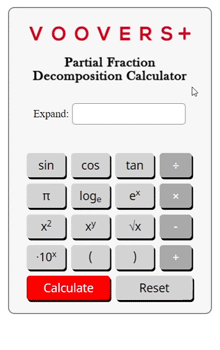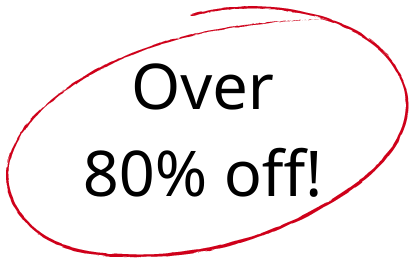Related Content
Partial Fraction Decomposition Calculator


To get unlimited answers, .

Lesson on Partial Fraction Decomposition
Lesson Contents
Why Decompose a Fraction?
Sometimes when working with a fraction, whether it be an application in engineering, science, or pure mathematics, we must “expand” it out fully to the non-simplified version of itself. This is often because the fraction has a denominator that is complex and prevents us from finding whatever solution we are after. Complex denominators can make adding, subtracting, multiplying, and dividing fractions very difficult.
Partial fraction decomposition can be thought of as the opposite of simplifying a fraction. Note that “simplifying” is used here in its classical algebra definition. Performing partial fraction decomposition can make problems simpler to solve, even though the fractions have become expanded. Algebraically, the fraction may be less simplified, but the entire expression may be more open to simplification afterwards.
Examples
Let’s take a look at a couple examples of fractions with partial fraction decomposition applied to them.
Example 1:
Fraction = (3x + 11)/[(x – 3)(x + 2)]
Partial fraction decomposition = [A/(x – 3)] + [B/(x + 2)]
Example 2:
Fraction = 1/[(x – 1)(x + 1)]:
Partial fraction decomposition = [A/(x – 1)] + [B/(x + 1)]
How the Calculator Works
This calculator is written in the programming language JavaScript (JS) and uses a JS-based computer algebra system (CAS) for computations. Because the calculator is written in JS, it runs inside of your internet browser locally on your device. This allows calculations to happen immediately and provides nearly instant solutions.
At the core of the calculator is the CAS which symbolically computes the partial fraction decomposition. Because the CAS is symbolic in nature, it preserves exact values rather than making approximations, which a numerical computation would. The symbolic calculations happen very quickly because they require fewer steps than a numerical routine’s iterations.
Behind the scenes, there is a complex and lengthy set of instructions that power the computer algebra system’s partial fraction routine. However, the code can be broken down into very many simple logic statements. It follows a similar process to what humans use when hand calculating partial fraction decomposition. It uses the same algebra rules that we follow in our school and professional lives, with the advantage of having a very fast computer processor!
When the final expansion/decomposition has been computed, it is converted to the math rendering language LaTeX and then displayed in the answer area of the calculator. If the inputted expression has no expansion or an error occurs during computation, an error notice will be displayed.












